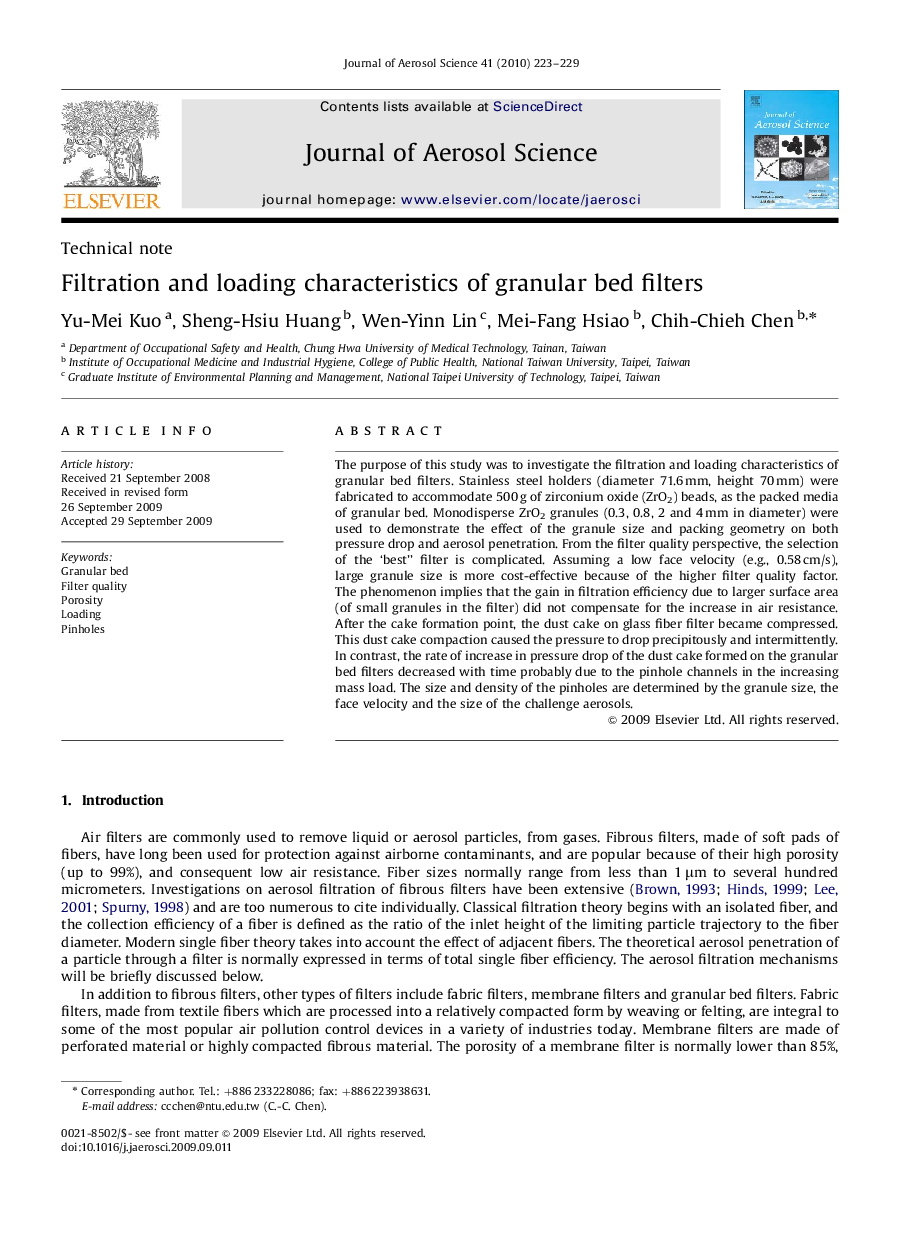| Article ID | Journal | Published Year | Pages | File Type |
|---|---|---|---|---|
| 4452867 | Journal of Aerosol Science | 2010 | 7 Pages |
The purpose of this study was to investigate the filtration and loading characteristics of granular bed filters. Stainless steel holders (diameter 71.6 mm, height 70 mm) were fabricated to accommodate 500 g of zirconium oxide (ZrO2) beads, as the packed media of granular bed. Monodisperse ZrO2 granules (0.3, 0.8, 2 and 4 mm in diameter) were used to demonstrate the effect of the granule size and packing geometry on both pressure drop and aerosol penetration. From the filter quality perspective, the selection of the ‘best” filter is complicated. Assuming a low face velocity (e.g., 0.58 cm/s), large granule size is more cost-effective because of the higher filter quality factor. The phenomenon implies that the gain in filtration efficiency due to larger surface area (of small granules in the filter) did not compensate for the increase in air resistance. After the cake formation point, the dust cake on glass fiber filter became compressed. This dust cake compaction caused the pressure to drop precipitously and intermittently. In contrast, the rate of increase in pressure drop of the dust cake formed on the granular bed filters decreased with time probably due to the pinhole channels in the increasing mass load. The size and density of the pinholes are determined by the granule size, the face velocity and the size of the challenge aerosols.
